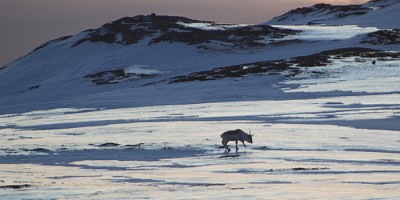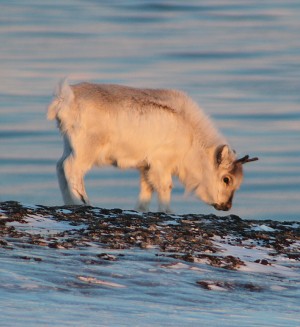Norway’s Arctic archipelago of Svalbard has experienced the sharpest rise in average temperatures in all of Europe, according to a new climate study set to be published on Thursday. Now Svalbard’s once-frozen and remote islands can expect more rain even during the middle of winter, and more troubling consequences for its wildlife.

The darkest time of the year has already descended over Svalbard, with the sun disappearing below the horizon for the next few months. That usually coincides with freezing temperatures, but not any longer.
“Our temperatures can now be around zero (the freezing point), also mid-winter, and we get rain here instead of snow,” Øystein Varpe, a Norwegian biologist who has contributed to the new study, told newspaper Dagsavisen. The study was carried out by researchers from the Norwegian University of Science and Technology (NTNU) in Trondheim, the Norwegian Polar Institute in Tromsø, the Norwegian Meteorological Institute and Norway’s universities in Stavanger (UiS) and Ås (NMBU).
The researchers represent a variety of disciplines and have concluded that Svalbard will be subject to much more rainfall in the years to come, which can also lead to more hard if temporary ice on the ground instead of snow. That in turn can make it difficult for Svalbard’s reindeer and other other wildlife to graze for food.

The number of reindeer cadavers found on Svalbard in 2012 already amounted to the highest ever, according to the study, with many of the animals believed to have died of hunger. Researchers say the reindeer simply have problems finding food when the ground is under hard ice created by snowmelt or rainfall that later froze.
Meanwhile, the lack of ice at sea on, for example, Svalbard’s Isfjord, causes ongoing problems for polar bears, seals and other wildlife. “The last time folks on Svalbard can remember having thick ice on the Isfjord near Longyearbyen (Svalbard’s largest population center) was when I was a student at the university’s center on Svalbard, and that was in 1998,” Varpe told Dagsavisen.
He initiated the study which also has documented that average temperatures on Svalbard have risen the most of anywhere else in Europe during the past 30 years. Svalbard’s “normal” average temperature in the middle of winter was minus-15C, but lately it’s been as high as plus-8C, and raining. Some scientists are fearing that Svalbard’s main island of Spitsbergen will become “the new Bergen.”
“What’s special is that now biologists, climate researchers, engineers and geophysicists have jointly shown how extreme weather affects both animals and people,” said Brage Bremset Hansen, another biologist at NTNU who’s been actively studying conditions on Svalbard. The warmer temperatures don’t just bring unusual and disruptive rain but also set off avalanches and flooding.
Meteorologist and climate researcher Ketil Isaksen has no doubt that Svalbard is experiencing the most climate change and that it’s especially visible in the winter. He predicts warmer and wetter weather ahead.
“It’s a complex picture because of many factors, and because Svalbard lies at the end of the Gulf Stream, temperatures can swing from week to week,” Isaksen told Dagsavisen. “But the long-term trend showing a rise in temperatures is clear. Especially during the past 30 years, and we are quite certain that temperatures will continue to rise.”
newsinenglish.no/Nina Berglund

